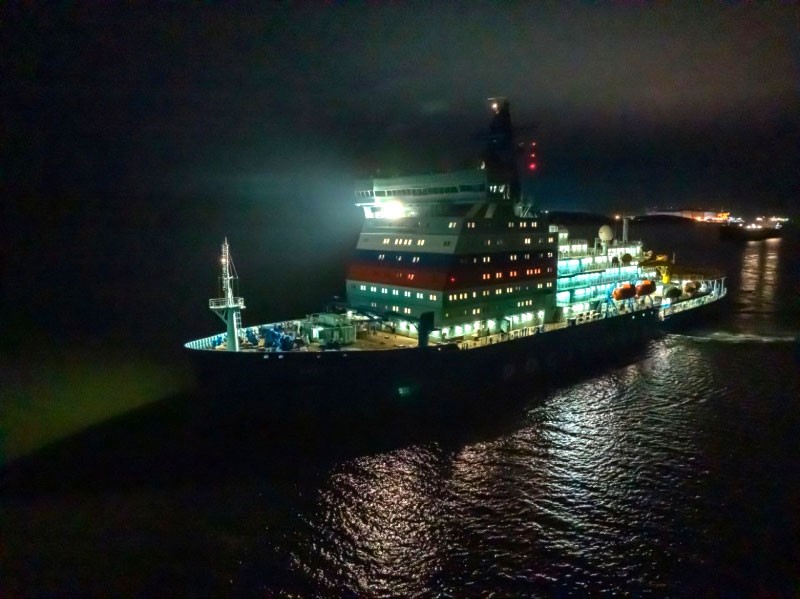Russia’s newest icebreaker is vital to the Northern Sea Route, says Rosatom
The Ural, Russia's third vessel of the powerful LK-60 class, arrived it its home port of Murmansk earlier this week.

The 173-meter-long nuclear-powered icebreaker Ural arrived in Murmansk on Tuesday after a six-day voyage from the Baltic Yard in St. Petersburg. It moored at Atomflot, the nuclear icebreaker base in the Kola Bay operated by nuclear power company Rosatom.
According to Acting General Director of Atomflot Leonid Irlitsa, the construction of the Ural clearly demonstrates Russia’s self-sufficiency both in terms of technology and industry.
“More than 90 percent of the equipment onboard the icebreaker is produced by domestic companies,” Irlitsa says in a comment.
He especially highlights the vessel’s electric propulsion system with asynchronous propulsion motors.
“This is the first Russian development that makes it possible to complete a package solution for icebreaker control under any condition,” Irlitsa explains.
[Putin touts Russia’s ‘Arctic power’ with launch of nuclear icebreakers]
According to Rosatom, the Ural will be of major importance for the further development of shipping on the Northern Sea Route.
“The active application of this transport artery will allow Russia to arrange efficient logistical routes and more comprehensively fulfill its export potential […],” the company said in a statement.
However, unlike sister ships Arktika and Sibir, the Ural might not engage in multi-purpose escort of vessels across the far northern and icy waters.
Representatives of Rosatom recently indicated that an exclusive agreement has been signed with oil company Rosneft over icebreaking for the company’s new major project Vostok Oil.
According to Rosatom, the Ural will set out from Murmansk on the third of December with a course for the Ob and Yenisey Rivers.
Rosneft’s Vostok Oil includes the construction of a major seaport on the coast of the Yenisey Bay and several hundred kilometers of pipelines from project fields in the Taimyr Peninsula.
The LK-60 is the world’s most powerful class of icebreakers. It can operate in up to three meter thick sea-ice and sail with a speed of 12 knots in 1.5 meter thick ice.
A total of seven vessels of the class are projected. Two of them are under construction at the Baltic Yard. On the same day as a flag raising ceremony took place at the Ural in mid-November, sister ship Yakutia was put on the water in a nearby ceremony.
This article has been fact-checked by Arctic Today and Polar Research and Policy Initiative, with the support of the EMIF managed by the Calouste Gulbenkian Foundation.
Disclaimer: The sole responsibility for any content supported by the European Media and Information Fund lies with the author(s) and it may not necessarily reflect the positions of the EMIF and the Fund Partners, the Calouste Gulbenkian Foundation and the European University Institute.
